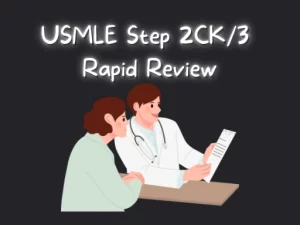After the long haul of medical school, the next big milestone is residency—a phase where theory meets practice, and doctors truly begin to shape their careers. In the USA, residency is a rigorous, structured training program following the USMLE, while in India, it’s often referred to as postgraduate medical education (MD/MS) after NEET PG. Choosing between the two isn’t just about geography—it’s about lifestyle, learning, and long-term goals. Here, we take a closer look at the real differences, challenges, and what to expect from each path.
Eligibility Criteria
Residency in India:
- Basic Qualification: Must have completed MBBS from a recognized medical college in India.
- Internship: Completion of a one-year rotatory internship is mandatory.
- Entrance Exam: Must qualify the NEET PG exam with a competitive rank.
- Counseling and Seat Allotment: Central (All India Quota) and State counseling sessions based on NEET PG score.
- Reservation System: Seats may be influenced by caste/category-based reservations and domicile status.
Residency in USA:
- Medical Degree: Must hold an MBBS or equivalent degree from a recognized institution.
- USMLE Exams: Must pass USMLE Step 1 and Step 2 CK to qualify for ECFMG certification.
- Clinical Experience: U.S. clinical experience such as observerships, electives, or externships is highly recommended.
- Supporting Documents: Includes letters of recommendation (LORs), personal statement, and MSPE.
- Application System: Apply through ERAS and participate in the NRMP match.
Residency in USA after USMLE:
- Exam Clearance: Completion of USMLE Step 1 and Step 2 CK is essential.
- Certification: Must obtain ECFMG certification to be eligible for the Match.
- Networking and Experience: Participation in clinical electives, research, and observerships strengthens the profile.
Application Process
| Aspect | India | USA |
|---|---|---|
| Main Exam | NEET PG | USMLE Step 1, Step 2 CK |
| Application System | MCC and state-specific counselling portals | ERAS (Electronic Residency Application Service) |
| Timeline | Annual exam and counseling rounds | Annual match cycle via NRMP |
| Supporting Documents | Internship completion, degree certificates | LORs, MSPE, Personal Statement |
| Flexibility | Limited by rank and reservation quotas | Broad options but highly competitive for IMGs |
Residency in India has a structured counseling process but limited flexibility in choosing institutions if your rank is low. The centralized system favors top scorers, but state quotas often create disparities.
In contrast, the residency in USA application process focuses on a holistic view—test scores, clinical performance, research, and personal narratives all contribute. This gives candidates multiple ways to stand out, especially if pursuing residency in USA after USMLE.
Structure and Duration of Residency
- Residency in India typically lasts 3 years, leading to an MD or MS degree depending on the specialty. The program is heavily focused on clinical duties, often with limited formal academic teaching.
- Residency in USA can last from 3 to 7 years based on the specialty. Internal medicine, pediatrics, and family medicine are usually 3 years, while surgical fields and specialties like neurosurgery take longer.
- For those considering residency in USA after USMLE, be prepared for rigorous clinical rotations, didactics, and assessments throughout the training.
Work Environment and Training Quality
- Residency in India often involves managing large volumes of patients in resource-limited settings. Residents handle most of the ward duties, night shifts, and emergencies, which can be physically and emotionally demanding. However, this also provides extensive hands-on experience.
- In contrast, in USA offers a well-structured program with protected teaching hours, simulation-based learning, and strict work-hour limitations to ensure resident wellness. Supervision by attendings and focus on patient safety are key features.
Financial Considerations
Residency in India:
- Most government colleges pay a stipend that varies from INR 40,000 to INR 90,000 per month. Private institutions may offer less.
- Tuition fees are negligible in government colleges but can be significant in private or deemed universities.
Residency in USA:
- Residents earn a salary ranging from $55,000 to $70,000 annually depending on the state and institution.
- However, preparing for residency in USA after USMLE involves expenses such as exam fees, travel for clinical experience, and application costs, which can add up to several lakhs in Indian rupees.
Career Opportunities Post Residency
India:
- Graduates often pursue super-specialization (DM/MCh) or enter private practice. Government jobs are also a stable option.
- Some doctors choose to join corporate hospitals or open their own clinics, though it may take time to establish a solid patient base.
USA:
- Post-residency, physicians can opt for fellowship training in sub-specialties, or directly begin working as attending physicians.
- Jobs are well-paying, but international graduates may need visa sponsorship (H-1B or J-1 waiver) to continue practicing in the U.S.
Pros and Cons Summary
Residency in India – Pros:
- Familiar language and cultural environment.
- Easier for Indian MBBS graduates to enter with a good NEET PG rank.
- Lower overall cost of education if opting for government institutes.
Cons:
- High patient load with long working hours and fewer structured teaching sessions.
- Reservation system and state quotas can limit opportunities despite good scores.
Residency in USA – Pros:
- Structured learning environment with modern facilities.
- Better pay and work-life balance due to enforced duty-hour rules.
- Strong academic and research exposure for those aiming to build a teaching or research career.
Cons:
- Expensive application process with no guaranteed match.
- Visa and immigration hurdles for international graduates.
- Cultural and clinical transition may require adjustment time.
What to Expect as a Resident (India vs USA)
Day-to-Day Life in Residency in India:
- Early morning rounds, long outpatient queues, and managing high patient turnover are common.
- Academic sessions are often limited due to clinical workload.
- Residents may have to manage both administrative and clinical responsibilities.
Day-to-Day Life in Residency in USA:
- Residents follow a structured shift schedule, often capped at 80 hours per week.
- Academic teaching, journal clubs, simulations, and regular feedback sessions are integrated into the curriculum.
- Emphasis on teamwork, communication, and inter-departmental collaboration is strong.
If you’re aiming for residency in USA after USMLE, prepare to balance clinical excellence with professionalism, adaptability, and constant learning.
Conclusion
Both paths, residency in India and residency in USA, have their own challenges and rewards. Your choice should reflect your long-term goals, financial capacity, learning preferences, and readiness for change. While residency in India offers accessibility and familiarity, residency in USA after USMLE opens doors to global opportunities, structured learning, and long-term professional growth. Choose wisely, prepare early, and focus on the journey that aligns with your values and aspirations.
Check out our YouTube Channel video for a Detailed explanation – Residency in India vs USA – What no one tells you.





